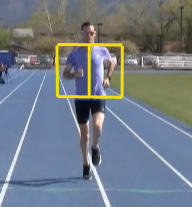Picture this: You just finished a tough, sweaty run. You feel exhausted, but accomplished. What you do next could either put you on a path to recovery or undo all of your hard work. These five things are must-do’s after every run to ensure longevity, recovery and optimal benefits from each workout.
1. COOL DOWN
One of the most overlooked parts of running is the cool down period, which is meant to efficiently bring your body back to a resting state. During a cool-down, your heart rate will decrease, your veins will constrict and your blood pressure will drop, yet your blood will continue to pump out metabolic waste while it begins to repair damaged muscle fibers.
To cool down properly, jog slowly for 10-15 minutes. After that, perform some body weight exercises to target other muscle groups. For example dynamic drills like high knees, butt kicks, jumping jacks and high skips will help strengthen your muscles and reduce post-workout tightness.
2. REHYDRATE
Maintaining fluid intake throughout the day is critical. After running, you'll need to replace fluids you lost through sweating. A few glasses of water can make a big difference. You'll also need to replace electrolytes that can be found in sports drinks, smart water products, gels, chews or salt tablets. If you prefer real food instead of processed sports nutrition, you can also find electrolytes in foods like bananas, avocados, pretzels and coconut water. Be sure to check labels on sports nutrition products, as many contain far too much sugar to benefit post-workout recovery.
3. STRETCH
In Meb Keflezighi's book, "Meb for Mortals," he refers to his daily stretching routines as "pre-hab" for runners that might otherwise end up injured and require a lengthy recovery. At 41 he will be the oldest U.S. Olympic runner in history, proving that the steps he takes to reduce injury are well worth the time and effort.
Static stretching is an excellent way to reduce post-workout muscle soreness and maintain good flexibility. Each static stretch should be held for 30 seconds. To avoid injury, static stretches should never be forced. Move slowly into the stretch until you feel the first bit of tension and hold there.
4. EAT
It's important to refuel your body with he the energy you expended shortly after working out. I like to say if you can get something into your body within 30 minutes of a run or workout you are aiding recovery. Experts recommend carbohydrates to replenish muscle fuel stores and protein to repair muscle damage. The forms in which you ingest these nutrients are less important, but experts prefer to see runners get them from natural, unprocessed sources such as yogurt and fruit. Chocolate milk is a popular option because it contains the recommended ratio of 4:1 carbs to protein---and it tastes great!
5. REST
Former pro runner Ryan Hall likes to refer to his post-run naps as business meetings, which makes sense since it's a crucial part of his workday. Sleeping is the number one way to repair, recover and rebuild after an intense workout. Unlike pros most of us can't go right to sleep after you run, but to get the most out of your training try to get 8 hours of sleep each night. This is most critical on days when you have had a difficult workout.
Non-running days are also an important part of the training cycle. Many weekly training programs will include a rest day and it's important to use those days. Rest days give your body a chance to fully recover and avoid injury as a result of overtraining.




